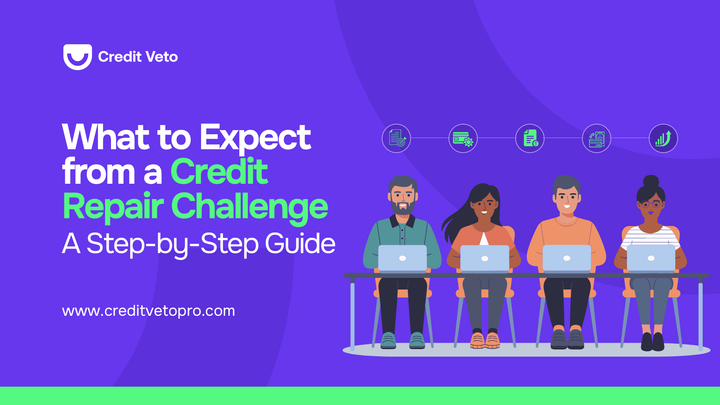Buy Now, Pay Later? Know the Risks Before You Click “Checkout”!

The rise of e-commerce has drastically changed shopping habits worldwide. Convenience, speed, and flexibility now define the shopping experience, thanks to innovations like Buy Now, Pay Later (BNPL) services. Platforms such as Klarna, Afterpay, Affirm, and Sezzle make it tempting to click “Checkout” with the promise of small, manageable payments spread over time. However, what seems like an effortless solution could come with serious financial risks that many consumers fail to consider.
From interest charges and late fees to overspending and credit score implications, BNPL programs can trap unsuspecting users in a cycle of debt. Before you make your next purchase with this tempting payment option, it’s essential to understand the hidden risks and protect your financial well-being.
What is Buy Now, Pay Later (BNPL)?
Buy Now, Pay Later is a short-term financing option that allows shoppers to purchase goods immediately while deferring full payment. Instead of paying upfront, you split the cost into smaller, often interest-free instalments spread over weeks or months. For instance:
- Klarna: Offers 4 interest-free payments split every two weeks.
- Affirm: Provides customizable payment plans with varying interest rates.
- Afterpay: Allows you to pay in 4 equal installments with no interest if paid on time.
On the surface, these programs appear harmless, providing flexibility for big or unplanned purchases. However, as with any form of credit, BNPL can have serious consequences if misused. These include:
1. Interest Charges Aren’t Always Clear
One of the biggest misconceptions about BNPL programs is that they are always interest-free. While many providers market interest-free plans for short terms (4-6 weeks), extended repayment periods often come with interest rates comparable to credit cards—sometimes even higher.
For example:
- Affirm offers interest rates ranging between 10-30% APR for longer plans.
- Klarna’s Pay Later Financing may charge interest depending on the user’s creditworthiness and repayment schedule.
A $500 purchase could easily turn into $650 or more with interest over several months. Consumers who overlook these terms could end up paying significantly more than anticipated.
Pro-Tip: Always read the fine print to understand whether interest applies to your BNPL plan, and choose short-term, interest-free options whenever possible.
2. Late Fees Can Snowball Quickly
While BNPL services advertise themselves as flexible and affordable, they often enforce strict repayment schedules. Missing payments, even by a day, can result in hefty late fees that add up over time.
- Afterpay charges $10 for a missed payment and adds another fee if the amount remains unpaid after 7 days.
- Klarna may charge up to $35 for late payments, depending on the plan.
For people juggling multiple BNPL plans or other financial obligations, it’s easy to forget due dates and accumulate penalties. Late fees not only inflate the overall cost of your purchase but can also damage your financial health.
Pro-Tip: Set reminders for each installment due date or enable automatic payments to avoid missed payments.
3. BNPL Encourages Overspending
One of the most significant risks of BNPL is its ability to encourage impulse purchases and overspending. By breaking down the cost into smaller payments, BNPL reduces the immediate financial burden and creates a false sense of affordability.
A recent study by the Financial Health Network found that 60% of BNPL users regret making BNPL purchases and admit to spending more than they would have if they had to pay upfront. BNPL makes it easier to justify buying things you don’t necessarily need—whether it’s new clothes, gadgets, or luxury items.
For example:
- A $200 pair of sneakers split into 4 payments of $50 feels manageable, but if you do this for 5 items in a month, you’ve committed to $1,000 worth of purchases.
When you lose track of your spending, it’s easy to fall into a debt spiral. Multiple BNPL plans combined with existing financial obligations can stretch your budget thin, leaving little room for emergencies or savings.
Pro-Tip: Set a monthly spending limit for non-essentials and stick to it, regardless of whether a BNPL option is available.
4. Your Credit Score Can Take a Hit
The relationship between BNPL services and credit scores can be complex, as each provider handles credit reporting differently:
- No Credit Building: Some BNPL providers don’t report on-time payments to credit bureaus. This means you don’t get credit score benefits for responsible use.
- Missed Payments: Late or missed payments can be reported to credit bureaus, negatively impacting your credit score.
- Hard Credit Checks: Certain providers, like Affirm, may conduct hard credit inquiries when you apply for longer-term financing, which can temporarily lower your credit score.
For example:
- Missing a $50 installment payment could be reported as a default, causing a dip in your credit score.
- Too many BNPL accounts may also raise red flags for lenders, as it signals financial overextension.
A damaged credit score can make it harder to qualify for loans, mortgages, or credit cards in the future.
Pro-Tip: Treat BNPL like any other credit product. Only use it when necessary, and prioritize on-time payments to protect your credit score.
5. Limited Consumer Protections
Unlike traditional credit cards, BNPL services often lack strong consumer protections. Credit cards provide benefits like fraud protection, chargebacks, and extended warranties, but BNPL options don’t always offer these safeguards.
For instance:
- If you receive a faulty product, disputing a BNPL charge can be more complicated than with a credit card.
- BNPL providers may still require you to make payments while resolving the dispute, putting strain on your finances.
Additionally, BNPL companies are less regulated than traditional lenders, which leaves room for hidden fees or predatory practices.
Pro-Tip: Use a credit card for significant purchases that require consumer protections, and reserve BNPL for smaller, low-risk transactions.
Real-World Consequences: A Growing Debt Problem
BNPL services have exploded in popularity, particularly among younger consumers. A 2023 survey by Morning Consult found that 58% of Gen Z shoppers used BNPL at least once in the past year. However, with this rise comes a concerning increase in debt.
Take the case of Emily, a recent college graduate who used BNPL to furnish her new apartment. Splitting the costs across multiple BNPL plans seemed manageable at first, but within a few months, Emily struggled to keep up with payments. Late fees piled up, her credit score dropped, and she ultimately relied on a personal loan to consolidate her debt.
Emily’s story is not unique. BNPL can provide temporary relief but can also create long-term financial stress if used irresponsibly.
How to Use BNPL Safely
If you choose to use Buy Now, Pay Later, follow these best practices to minimize risks:
- Understand the Terms: Always read the fine print for interest rates, fees, and repayment schedules.
- Create a Budget: Ensure you can comfortably afford the payments without sacrificing other financial goals.
- Limit BNPL Use: Avoid juggling multiple BNPL plans at once to prevent debt accumulation.
- Pay on Time: Set up reminders or automatic payments to avoid late fees and credit damage.
- Use BNPL for Essentials: Reserve BNPL for planned purchases, not impulse buys.
Final Thoughts
Buy Now, Pay Later services offer a tempting alternative to traditional credit, but the risks can outweigh the benefits if you’re not careful. Interest charges, late fees, overspending, and credit score damage are just a few potential pitfalls to consider before clicking “Checkout.”
To stay financially healthy, use BNPL responsibly, prioritize budgeting, and always read the fine print. Remember: If you can’t afford to pay for it now, it might not be worth paying for later.
Sign up for Credit Veto Today, download our Free Credit Repair Starter Guide, and take your first step towards a stronger financial future during this holiday and even in 2025.




Comments ()